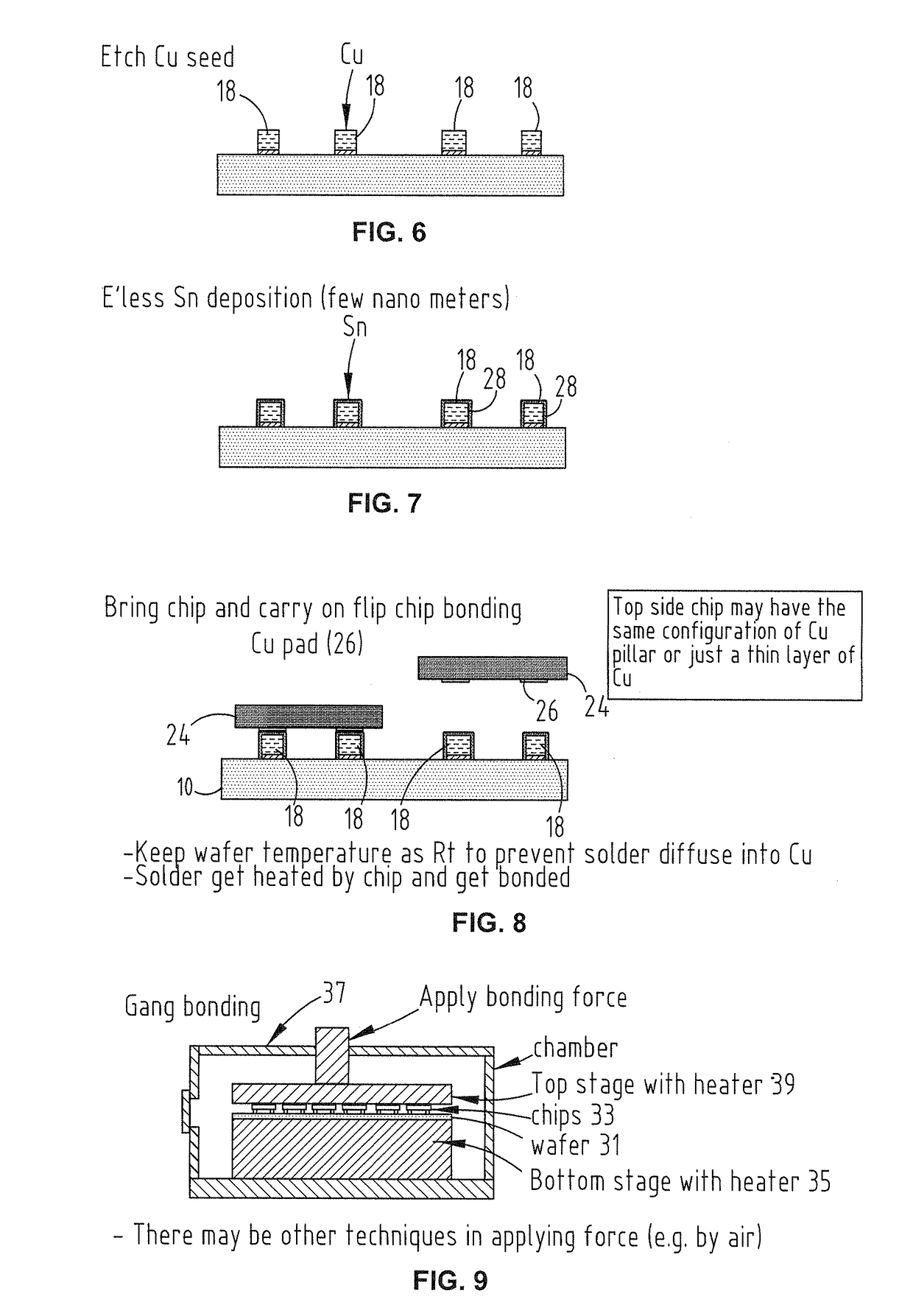A method for bonding a chip to a wafer
- Summary
- Abstract
- Description
- Claims
- Application Information
AI Technical Summary
Benefits of technology
Problems solved by technology
Method used
Image
Examples
first embodiment
[0051]In a first embodiment, as shown in FIG. 6, bonding material, presently tin (Sn) solder 28, is deposited onto the posts 18. The solder 28 is deposited using electroless electroplating, though other techniques may be used. Similarly, another low melting point metal may be used in place of Sn.
[0052]The bonding material 28 is deposited in a thickness no greater than the surface roughness height of the planarized contact surface 20. While the surface height roughness will typically be less than 20 nm, even for rougher surfaces it is desirable that the bonding material thickness remain less than 1 micron. This reduces the likelihood that permanent bonding will be achieved using an intermetallic compound comprising the bonding material.
[0053]After application of the bonding material, the posts 18 are temporarily bonded to the contacts 26 using the bonding material to stabilize a position of the chip relative to the wafer 10 for permanent diffusion bonding of the chip to the wafer 10....
second embodiment
[0065]In a second embodiment, after regions of the Cu seed layer have been etched to complete formation of the posts, an electroless solvent is used to temporarily bond the chip to the wafer.
[0066]With reference to FIGS. 12(a), 12(b) and 12(c), to deposit the solvent onto the contacts 38 of a chip 40, a solvent bath or tray 50 containing electroless solvent is positioned between chip pick up and bonding in the flip chip bonder. During temporary bonding, the flip chip bonder picks up the chip 40 (see FIG. 12(a)) and dips it in the electroless solvent bath 50 (see FIG. 12(b)) to coat the contacts 38 (e.g. pads or posts) with solvent 41. While the solvent is wet the chip 40 is brought into register with the wafer 42 (see FIG. 12(c)). By contacting the chip 40 to the wafer 42, and ideally pressing the chip 40 to the wafer 42, solvent from the contacts 38 of the chip 40 flows onto, and coats, the contacts 44 of the wafer 42. In this manner the solvent fills between the contact surfaces 4...
PUM
 Login to View More
Login to View More Abstract
Description
Claims
Application Information
 Login to View More
Login to View More - R&D
- Intellectual Property
- Life Sciences
- Materials
- Tech Scout
- Unparalleled Data Quality
- Higher Quality Content
- 60% Fewer Hallucinations
Browse by: Latest US Patents, China's latest patents, Technical Efficacy Thesaurus, Application Domain, Technology Topic, Popular Technical Reports.
© 2025 PatSnap. All rights reserved.Legal|Privacy policy|Modern Slavery Act Transparency Statement|Sitemap|About US| Contact US: help@patsnap.com



